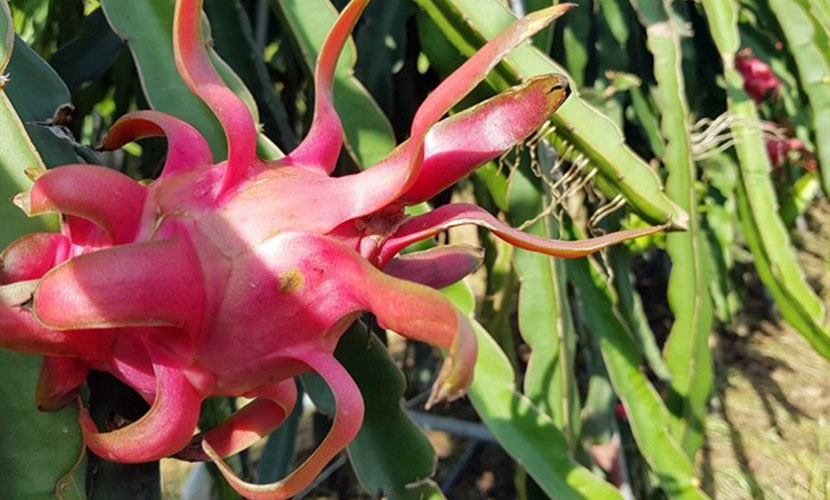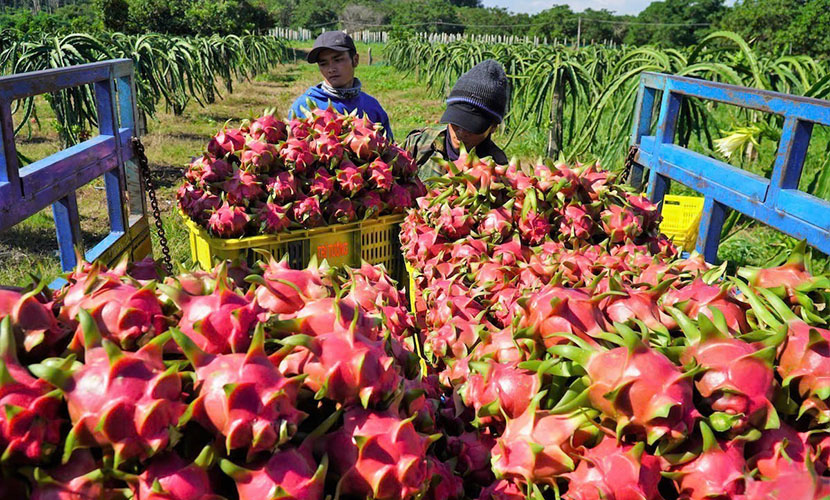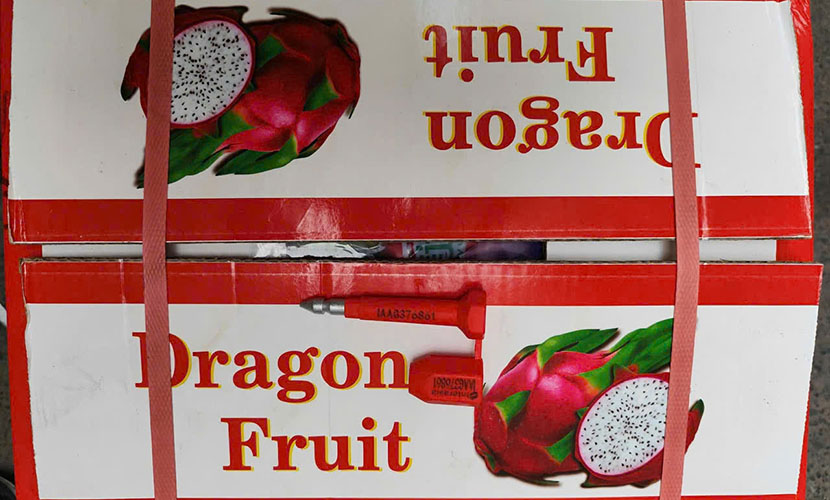
In 2024, Vietnam continues to affirm its global leadership in dragon fruit exports. Specifically, the export value of Vietnam’s dragon fruit exceeded $600 million in 2024. It accounted for an overwhelming share of the total global export value of this fruit.
According to the 2024 Global Fruit Market Report, dragon fruit remains one of Vietnam’s key agricultural export products. The total global export value of dragon fruit in 2024 reached approximately $627 million. In which, Vietnam dominated over 95%, maintaining its position as the world’s largest dragon fruit exporter.

Vietnam’s dragon fruit
China was the largest traditional market for Vietnam’s dragon fruit. The export value of this fruit to China reached $300 million in the first half of 2025. Meanwhile, emerging markets such as the United States, India, the UAE, and South Korea recorded strong growth. Specifically, exports to the U.S. increased by 89%, to India by 35%, and to Middle Eastern countries by 30%.
Vietnam maintains a dragon fruit cultivation area of about 55,000 to 60,000 hectares. They primarily locate in the South Central Coast and Mekong Delta regions. Of these, Binh Thuan province continues to serve as the country’s “dragon fruit capital” with nearly 28,000 hectares.
The annual output here exceeds 550,000 tons, thanks to favorable hot and dry climate conditions and a proactive irrigation system. This region also leads the way in adopting sustainable agricultural standards. There are 9,500 hectares certified under Vietgap and 350 hectares meeting Globalgap standards. They qualify them for export to demanding markets such as the EU, Japan, and the United States.
In the Mekong Delta, Tien Giang province stands out with about 8,600 hectares of specialized dragon fruit cultivation. However, the province mainly focuses on red-flesh dragon fruit, with high sugar content and vibrant color. Dragon fruits here have adopted organic farming models to meet phytosanitary requirements from importing partners.

Vietnam’s dragon fruit farm
Long An province also plays a vital role, accounting for about 15% of the country’s total dragon fruit cultivation area. This region is notable for its use of nighttime lighting technology to induce off-season dragon fruit. Thereby, it allows farmers to control harvest timing, supply fruit year-round, and increase economic returns per hectare.
Additionally, several provinces such as Vinh Long, Tay Ninh, and Ba Ria–Vung Tau are expanding Vietnam’s dragon fruit cultivation with a focus on sustainability. These efforts are gradually forming production-consumption linkage chains geared toward export.
This development shows that dragon fruit is no longer a specialty crop of just a few localities. Also, it is increasingly becoming a regionally and nationally strategic agricultural product.
To meet export requirements, Vietnamese dragon fruit farmers are gradually shifting toward modern farming practices. They should focus on food safety, traceability, and environmental protection. Standards such as Vietgap and Globalgap are no longer unfamiliar but are becoming essential prerequisites for accessing major markets.
One of the most notable advancements is the use of nighttime lighting systems to induce off-season flowering. This technique enables growers to control harvest schedules, extend the production season, and supply products year-round. Thereby, it increases income and reduces the risk of price drops during bumper harvests.
In parallel, drip irrigation combined with organic and micronutrient fertilization is widely applied. It helps conserve water, reduce input costs, and ensure balanced nutrition for the plants. As a result, dragon fruit plants develop more uniformly, show improved disease resistance, and deliver stable yields.

Vietnam’s dragon fruit box
Canopy training and pruning techniques have also been improved to ensure orchard ventilation. Additionally, these techniques help minimize pest and disease pressure, and promote efficient flowering and fruit setting.
Especially, the trend of using biological methods for pest control is becoming increasingly common. Therefore, it helps reduce chemical pesticide use and ensure low residue levels to meet phytosanitary requirements from demanding export markets.
Currently, the two main types of dragon fruit exported internationally are white-flesh and red-flesh varieties. Among them, red-flesh dragon fruit is gaining dominance in premium markets. It has attractive appearance, high sugar content, and superior shelf life.
With standardized and well-invested farming processes, Vietnamese dragon fruit is impressive in terms of big volume. Addition, it is steadily conquering the global market with consistent quality and a reputable brand image.
Vietnamese source: https://tapchivietnamhuongsac.vn/nuoc-nao-xuat-khau-qua-thanh-long-nhieu-nhat-the-gioi-2775.html
